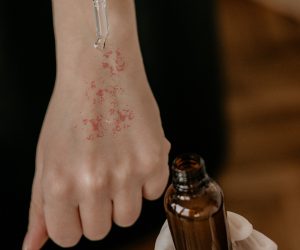
Study Demonstrates UV-C Light Is Effective for Killing COVID-19 on N95s
Henry Ford Health System via EurekAlert – Dermatology researchers at Henry Ford Health System, in collaboration with a team at the University of Michigan, have demonstrated that certain N95 respirators tainted with COVID-19 can be effectively and safely decontaminated for reuse using ultraviolet-C light (UV-C), a method commonly utilized for treating rare skin diseases.
Researchers say the outside and inside of the facemasks were decontaminated in a prototype phototherapy unit that dispenses a UV-C dosing level high enough to effectively kill the virus in less than two minutes while still preserving the facemask’s breathability, fit and overall integrity.
Of the five N95s used at Henry Ford and tested for the coronavirus in the study, the decontamination process worked best on two models – facepieces on 3M 1860 and Moldex 1511 and straps on 3M 8210 and Moldex 1511. The effects of the dosage varied on the other tested models and their straps, suggesting that the UV-C radiation can degrade them. Researchers say wiping the straps with ethanol before decontamination would likely be required as an additional disinfection step in the process to maximize the wearer’s safety.
Researchers emphasized that fit testing be required each time a disinfected facemask is returned for use or a new model is being worn for the first time.
The research, conducted in partnership with the University of Michigan, is published in the International Journal of Infectious Diseases.
“Our findings reveal a practical, and viable option should hospitals encounter shortages of N95s in the future,” says David Ozog, M.D., chair of Henry Ford’s Department of Dermatology in Detroit and the study’s lead author. “Using UV-C has been shown to be effective in killing other coronaviruses and the flu virus. We were able to replicate that sterilization effectiveness with COVID-19.”
Ozog stressed that facemask sterilization should only be used in severe shortages of N95s.
Testing of the N95s for decontamination was performed at U-M’s SARS-CoV-2 research lab in Ann Arbor.
“When Dr. Ozog approached us about helping to demonstrate the effectiveness of their UV sterilization procedure with live SARS-CoV-2 virus, we immediately agreed and understood that we could provide some confidence to their healthcare workers that this procedure was effective,” says Jonathan Sexton, Ph.D., assistant professor of Internal Medicine and director of the U-M Center for Drug Repurposing and a study co-author.
The research culminated the work of a team of dermatologists and researchers who have devoted more than 400 hours since the pandemic hit Michigan to investigating how phototherapy – a type of medical treatment used for treating certain skin conditions – could serve a role in the global health emergency. The Henry Ford team includes Henry Lim, M.D., and Iltefat Hamzavi, M.D., both of whom are internationally recognized for their expertise using phototherapy for treating rare skin diseases like vitiligo and hidradenitis suppurativa.
The team’s focus centered on the potential of decontamination contaminated N95s for reuse by healthcare workers. They examined the reliability of the prototype unit and ultraviolet light, the minimum dosage needed for decontamination, the importance of fit testing post-decontamination and four common methods associated with facemask decontamination.
The pandemic exposed a critical flaw in the global PPE supply chain as the health care industry struggled to obtain supplies of N95s, other facemask types, gowns, gloves and face shields. As a result, decontaminating N95s to be reused safely became essential for many health care systems and providers until new shipments of supplies arrived. Henry Ford decontaminated thousands of N95s and returned them to their user for reuse in the first couple months of the pandemic.
“The beginning of the pandemic was physically and mentally overwhelming for everyone. We desperately wanted to help our front-line workers, who were crushed with COVID-19 cases at Henry Ford,” Dr. Ozog says.
UV-C is one of the four methods considered for facemask decontamination. It is well known for its ability to penetrate the DNA of bacteria and microorganisms and prevent them from multiplying or replicating. Previous research has shown UV-C to be effective at killing the flu virus as well two other well- known coronaviruses: severe acute respiratory syndrome (SARS-CoV) and Middle East respiratory syndrome (MERS-CoV). Whether it could work on the novel COVID-19 virus was previously unknown.
Henry Ford’s phototherapy unit was modified with the help of engineers at Daavlin Co., a phototherapy manufacturer based in Bryan, Ohio. It sits on a flat surface and is about five feet long. The decontamination field measures 15 inches deep by 45 inches long – plenty room to treat up to 27 facemasks at one time. The ultraviolet light is powered by at least 10 but not more than 20 UV-C lamps.
For the study, five types of N95s used at Henry Ford were tested at the U-M BSL3 biosafety lab. The respirators were contaminated with four drops of the COVID-19 virus taken from viral stocks obtained from the federal government’s Biodefense and Emergency Infections Research Resources Repository. The virus droplets were placed in four areas: nosepiece, apex, chin and strap.
The facemasks were kept dry in a biosafety cabinet at room temperature for 40 minutes. Then they were moved to the phototherapy unit for decontamination using a dose of 1.5 J/cm2 ultraviolet light radiation – at a wavelength of 254 nanometers – to each side of the mask for about 60 seconds. Ultraviolet radiation is measured in three wavelengths: UV-C, UV-B and UV-A. UV-B and UV-A are associated with skin cancer and are also used in the treatment of some dermatologic diseases such as vitiligo and psoriasis.
Indermeet Kohli, Ph.D, a Henry Ford dermatology physicist, developed a formula by which the UV-C dose delivered to the exterior and interior parts of the facemasks can be assessed for decontamination and safe use. She says the curvature of the facemask and the distance between its surface and the lamps are crucial factors in achieving the proper dosage.
“It is imperative that this type of assessment be performed to make sure that the decontamination process is done properly,” Dr. Kohli says. “Failure to do so could result in catastrophic consequences for the front-line healthcare workers.”
The effectiveness of decontamination was measured in analytical chemistry terms by the limit of detection (LOD) and no cytopathic effect (CPE). LOD is the minimum concentration of a component that can be reliably detected. CPE means the virus yielded no infectious properties.
All five facepieces had below LOD and no CPE but some had traces of the virus on their straps, according to the research.
Researchers cautioned that none of the N95s tested were visibly soiled. Most health systems including Henry Ford prohibit the reuse of soiled N95s.
In a Letter to the Editor published in Photodermatology, Photoimmunology & Photomedicine, Shanthi Narla, M.D., a Henry Ford dermatology fellow, urged caution about using UV-C decontamination due to the variety of N95s in use across the country. “This process should only be considered as a risk mitigation effort during severe shortages,” she wrote.
In a demonstration of the prototype unit, the facemasks are placed on a stainless-steel tray, separated by autoclave tape to keep them from touching each other. Once one side of the facemask is treated, it’s flipped over to perform a separate decontamination. Researchers say any visibly soiled masks should not be treated but rather properly disposed as medical waste.
“Considering that many healthcare providers are using substitutes for N95s that offer very limited degree of protection, using (UV-C) and repurposing phototherapy devices could be the best practical solution at this time,” Dr. Hamzavi wrote in Letter to the Editor published online in JAAD.
Researchers stressed that not all N95s are created equal and may not withstand decontamination. Degrading may occur in the facemask’s outer surface and the elasticity of the bands. Thus, researchers underscored the importance of fit-testing after decontamination in a study published in the Journal of the American Academy of Dermatology. Health care workers are fit-tested every year with their N95 to ensure a proper fit and no air can penetrate the outer edges.
UV-C is one of the four common methods used in health care to sterilize N95s. Hydrogen peroxide vaporization, microwave generated steaming and dry heating also have shown to be effective in varying degrees. UV-C and HPV are also commonly used for disinfecting patient care units, surgical suites and intensive care units in the health care setting. Only the UV-C method was used in the Henry Ford study.
Researchers strike a cautionary tone for N95 decontamination no matter the method.
“Given the current COVID-19 pandemic, extreme measures are needed to keep those on the front line protected,” says Angela Torres, M.D., a Henry Ford dermatology fellow and lead author in a study published online in Photochemical & Photobiological Sciences. “These options are cost effective, quick to employ and have the potential to save many lives and valuable resources.”
However, Dr. Torres says, discarding a contaminated disposable N95 after a single use is “still ideal.”
To read the original article click here.






